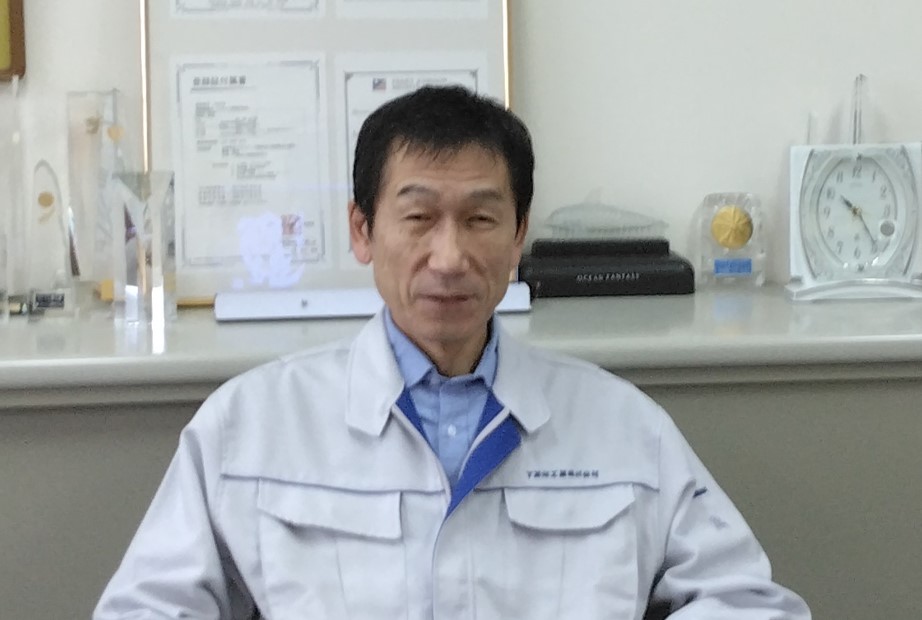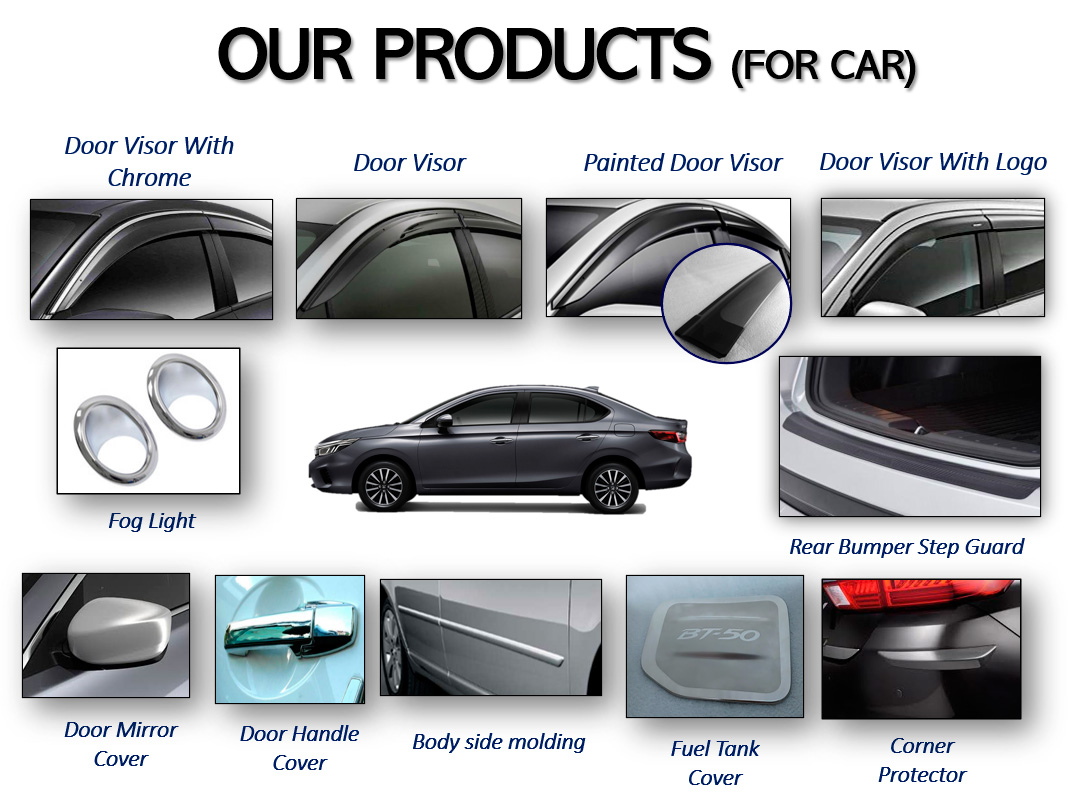Izumi Industry is a renowned company specializing in the manufacturing of high-quality automotive parts, including rear and side visors, for prestigious clients like Mazda, Nissan, Porsche, BMW, Mercedes-Benz, and others. Their primary product, side visors, is extensively utilized in over 80% of Japanese cars, contributing to enhanced safety and aesthetics. Izumi Industry is dedicated to continually improving its automotive products to optimize power consumption without compromising safety, especially in the context of the automotive industry's shift towards electric vehicles (EVs).

Japan is currently experiencing an interesting period marked by supply chain disruptions due to COVID-19, tension between China and the US, and a historically low yen. In this context, Japanese companies are perceived as highly attractive on the international scene. Do you agree with this premise, and if so, what do you consider the main advantages of Japanese companies within this macroenvironment?
The current economic environment has varying impacts on different companies. The yen is presently historically weak, with 1 dollar equivalent to 150 yen. This situation is favorable for exporters, leading car manufacturers to emphasize their export business. However, for us, importing products from Thailand poses a disadvantage as our production hub is located there.
The Japanese population is aging, and it is projected to drop below 100 million people by 2050, posing challenges such as a shortage in the labor force and a shrinking domestic market. As a company specializing in automotive parts, how do you respond to these demographic shifts, and what strategies are you employing overseas to ensure long-term business success?
The domestic Japanese market will continue to shrink. We already see labor shortage issues emerge in the current labor environment. With this situation, our attention is increasingly directed towards the international market. With a factory in Thailand, we identify Asian countries as our next target markets.
Our primary product, side visors, is extensively utilized in over 80% of Japanese cars but is less common in Europe, where the installation rate is not as high as in Japan. While our initial focus was on the Japanese market, the shift to the overseas market is now imperative. To expand our reach, we aim to target regions with a low percentage of side visor users. The objective is to increase the adoption of side visors in cars among a wider global audience.
In interviews with other leading companies in this field, such as Penstone and Uchida, they emphasized that partnerships are key to unlocking international markets when companies require a broader vision for selling their products. Within your business model, what role does partnership play, and are you actively seeking new partnerships within these overseas markets?
In our international strategy, having local partners is crucial, and we view our customers and suppliers as integral partners in our endeavors. As we venture into foreign markets, we traditionally seek partners associated with Japanese companies. However, we first choose local Japanese companies or companies with business relationships with Japanese companies as our partners. These partners should not only be able to supply high-quality products comparable to Japanese standards but also be familiar with and follow our manufacturing policies.
Over the past decade, there has been a rise in regional manufacturers, notably from China, Taiwan, and South Korea, replicating the Japanese manufacturing model at a lower cost. Nevertheless, Japan has retained a high global market share and leadership, particularly in niche B2B fields. What do you consider to be your company's core strength that can attract prospective foreign clients in this competitive landscape?
This year marks our 64th anniversary, and throughout this period, we have cultivated partnerships with prestigious car manufacturers renowned for their exacting standards in terms of quality, cost, and delivery, even on a global scale. By meeting the strict requirements set by these companies and exceeding them in QDC conditions, we have earned the trust and trust of car manufacturers. I consider this aspect to be a key strength for our company.
Your company specializes in the OEM production of various car parts, including rear and side visors, for prestigious clients like Mazda, Nissan, Porsche, BMW, Mercedes-Benz, and others. Among the products you offer, which one do you believe has the most growth potential? Additionally, are there any other types of parts or new industries where you would like to apply your products and expertise?
We anticipate steady rather than drastic growth in our product lineup, with current sales levels remaining consistent. Our primary focus lies in expanding our business overseas and venturing into more foreign markets.
We recognize the reality of our business and aim to progress gradually, maintaining the manufacturing spirit of monozukuri. Although car components serve as the primary pillar of our business, we have initiated efforts in two additional pillars—medical supplies and sports-related items. While car-related products remain central, the introduction of these additional pillars aims to strengthen and support our core business.
The automotive industry is undergoing an exciting shift towards electric vehicles (EVs), with Japan approving a strategic energy plan to electrify all Japanese cars by 2035. Another aspect crucial to improving energy consumption is enhancing aerodynamics and reducing the weight of vehicles. As a provider of various vehicle parts, such as visors, your products directly influence these factors. To what extent do you consider the weight and aerodynamics of your products to optimize power consumption without compromising safety?
We have identified weight, aerodynamics, and cost as issues to be addressed. With the transition to electric vehicles (EVs), manufacturers are looking to reduce vehicle weight. Our ongoing research is focused on addressing the impact of exterior components on aerodynamics, taking these changes into account.
The adoption of more expensive batteries in EVs can drive up overall car prices. However, considering the need to maintain competitive pricing, we are working to offset these cost increases by exploring ways to lower the costs of other components. This research and study encompass our exterior products and other parts to ensure that we can produce a broader range of items at a more economical cost.

Japan is renowned for leading in technology and providing innovative solutions to the evolving needs of society. Your collaboration with Mr. Emeritus Ishii from Kyushu University, a technical and design advisor for developing new products and technologies for Italdesign, the world's leading car design company, as well as the joint research agreement with Professor Takenouchi, signifies a commitment to advancements. Could you elaborate on the main focus of your R&D strategy? Additionally, are there any new products or developments that you can share with us today?
We are currently collaborating with two professors, Mr. Ishii and Mr. Takenouchi, to innovate a unique and distinctive car component. While we cannot disclose specific details at this point, our focus is on developing new materials and products.
Both professors, with backgrounds in art and engineering, contribute to the design process. Their approach involves balancing aesthetics with strength and functionality. Professor Ishii aims for cool designs, while Professor Takenouchi prioritizes convenience and functionality, creating a complementary dynamic. As part of our commitment to sustainability and alignment with SDG initiatives, our products are designed to meet the increasingly important demands of environmental performance.
Since establishing a factory in Thailand in 1997 as your initial step in international expansion, to which countries have you extended your product distribution? Furthermore, how do you ensure that the products manufactured outside Japan maintain a similar level of quality?
We selected Thailand initially because we wanted to adopt our monozukuri process to our overseas plants. The monozukuri production in Japan was not sufficiently cost-competitive for Japanese car manufacturers. To address this, we aimed to reduce the monozukuri cost while still meeting our customers' demands. Therefore, we established a factory in Thailand where we manufactured products and then imported them to Japan to fulfill the requirements of our customers.
You've expanded into new business fields such as the medical and sports industries. Could you provide more details and elaborate on these new ventures? Additionally, what are your expectations for the future of these businesses?
While these two new ventures are currently modest pillars, our objective is to strengthen and elevate them to contribute to the overall stability of our company. We anticipate securing steady orders for our medical items, which require a higher level of monozukuri focused on life-related aspects. Our goal is not to remain in a realm of easy manufacturing, but rather to advance and expand into a more sophisticated level of monozukuri within the medical field.
In the medical field, what type of product are you aiming to develop that necessitates a high level of monozukuri?
In the medical field, we aim to develop high-quality products that require a sophisticated level of monozukuri. Currently, our company focuses on suction-related items, especially tubes and suction-related items at a relatively basic level. We plan to broaden our horizons, advancing to a higher tier of medical supplies soon. Ultimately, we aspire to delve into medical supplies or items that directly impact people's lives.
As a company celebrating its 64th anniversary, what is your mid-term strategy for ensuring continued growth?
Our mid-term strategy involves expanding our presence to encompass all Asian countries. With a manufacturing site established in Thailand 25 years ago, we have a strong foundation there, and our next objective is to extend our reach across the entire Asian region. Recognizing the ongoing growth in Thailand, we aim to sustain and build upon our success in that market.
Given that about 40% of Newsweek International magazine's readers are in the automotive sector and look for information and business opportunities, as the President, do you have a specific personal dream or aspiration you would like to accomplish in your role?
Our mid-term goal involves expanding to Asian countries. However, given the outstanding quality of car makers in Japan, Germany, and Europe, we also aim to extend our reach to these regions. Our focus is on collaborating with high-quality car manufacturers in Japan and Europe to strengthen our presence in these key markets.
0 COMMENTS